Built Too Much? The fact that the real estate market no longer absorbs everything is an opportunity.
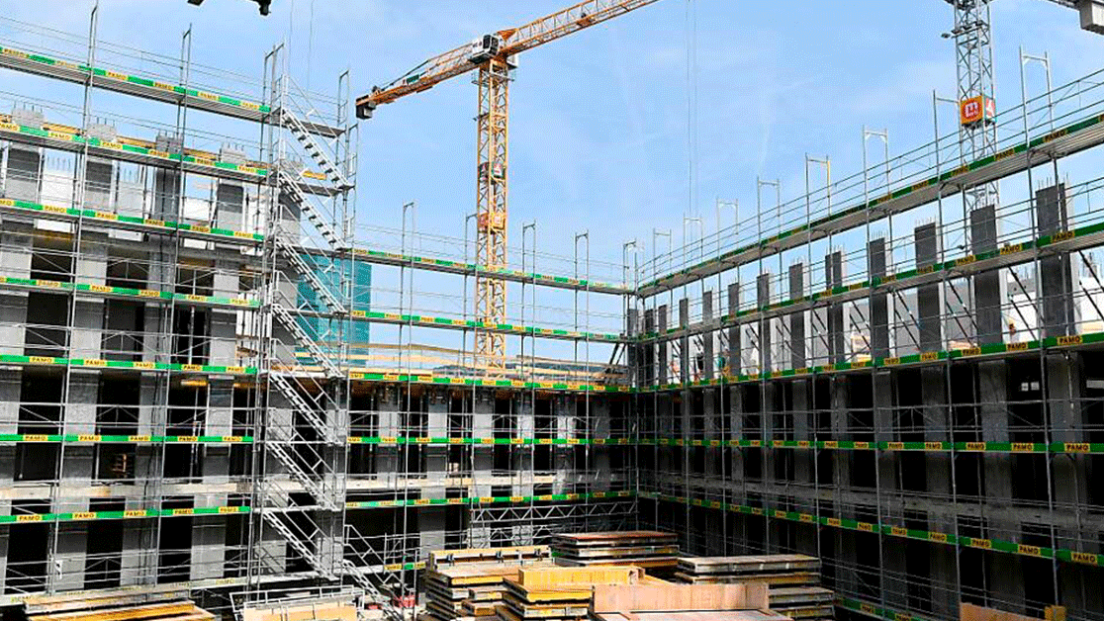
If you want to assert yourself in the market today, you have to rethink quality. We all benefit from this in the end.
Has too much been built in Switzerland? Maybe too much in the wrong place? It is true that one cannot speak of THE Swiss real estate market, as it is divided into different sub-markets, but the absorption time has generally lengthened, say the seven real estate developers who met in June for the HIG expert discussion. They assume that a basic set of apartments is always needed – just where and which, that is the question. A question that leads to rethinking quality.
“Quality before quantity” – this phrase was used fifty years ago. But while quality was then associated with luxury, today people think of needs-based, sustainable building. This may be more expensive to create, but it pays off in the long term. The fact that the market no longer absorbs everything is also a gain. After all, everyone benefits from better quality – residents and users as well as creators and investors.
“Perhaps too much has been built and the result is interchangeable apartment blocks. That is why we are now dealing more intensively with the issue of quality. That is the positive aspect of this development »
Roland Thoma
The ABC of the situation – quality over quantity
Around 75,400 apartments were vacant in Switzerland in 2019 * and the trend is rising. While two or three years ago the sales or letting rate when a property was completed was an average of 95 percent, today it is only 80 to 85 percent. The more peripheral the location, the longer the absorption time. In the urban centers there are up to 1000 inquiries for an apartment, and because the capacities are limited, the demand has to shift. There is also solid demand beyond the centers and A locations, for example for condominiums in the medium and low price segment. On the other hand, the once coveted luxury apartments are also among the slacks in the centers, while rental apartments in the low price segment are absorbed almost everywhere immediately.
So it's about the right location with a product for the right segment. Nevertheless: "In structurally weaker regions, even in the middle segment, we need longer than two to three years ago," says René Frauenknecht from Steiner AG, for example. “Today we are keeping our hands off places that already have high vacancies and are reluctant to develop in B and C locations”. The risk of doing so is due to the relatively high pressure to acquire: “There are still large pension funds that are very aggressive on the market and secure land. It is very important that the quality of the location comes before quantity. That is new. Up until a few years ago you couldn't go very wrong if you had acquired a plot of land in a bad location, ”says Frauenknecht. “The low interest rates can also lead to wrong decisions, as risks may not be properly assessed. The wrong product in the right position no longer works today, ”adds Tobias Rotermund from Odinga Picenoni Hagen AG.
The ratings from analysts such as Fahrländer or Wüest Partner are an important basis, say the developers, but these location analyzes have to be verified and interpreted on site in order not to simply repeat what has worked in the past. "Most of the location analyzes are data-based and digital," says Marc Lyon from Implenia Schweiz AG. «If we strictly followed the software's suggestions for our development strategies and product definition, we would always have the same without innovations. We would just make a copy of what has been built up over the past few years. These data-based foundations are indisputably important, but human interpretation is really necessary. We perceive a property in a completely different way and have a completely different reference when we get an idea of the location and not just look at the property via Google Maps and Street View ».
"If we were to strictly follow the software's suggestions for our development strategies and product definition, there would be no innovation."
Marc Lyon
As simple as it is convincing – new concepts
Once the potential of a place has been determined, it is a matter of developing a future-oriented concept. How can this look?
Since an automatic price increase is no longer readily accepted by users today, space efficiency is the focus of the developers. It is achieved, for example, through a reduction in space, compact floor plans, prefabricated products, standardized construction processes and the elimination of gadgets. The result doesn't have to be zero-eight-fifteen. "You can achieve good quality even in difficult locations with simple but convincing architecture and inexpensive production with local companies", is Tobias Rotermund's experience. Large balconies are popular and not necessarily expensive, good furnishing makes up for the missing square meters and architecture can be as simple as it is convincing.
You can also achieve good quality in difficult locations with simple but convincing architecture and inexpensive production »
Tobias Rotermund
As far as the variety of apartment typologies is concerned – it is more expensive to build, but it is useful for renting in the long term. Other components that affect the quality of living are accessibility, exterior design, sustainability, mobility and neighborhood. "There are a whole range of options for diversifying rental living and for setting yourself apart on the market," says Valentin Müller from UTO Real Estate Management AG. “These include residential typologies that focus on a specific target group as well as integrated mobility concepts that optimally network the apartments with their surroundings. And not to forget: the quality of the settlement. We are talking here of 'living space', of spaces with a high quality of stay. Concepts are required for this. With a good development, you can create a good micro-location that meets human needs ».
But what needs does the specific target group have at the specific location? Do people want representative architecture or identify with the place where they live? Do you value neighborly exchange or do you prefer privacy? Do you accept the lush, green outdoor space as compensation for the B or C location? … Who determines what quality is? The architecture elite? The users?
A central finding in real estate communication is that the involvement of those affected promotes the acceptance and quality of a project. In addition to the quality of the product, the quality of the development process becomes more important.
“Whether a project is accepted depends not least on the involvement of the population”
Claudia Siegle
"The early involvement of the population in the Mattenhof project in Lucerne South has paid off," says Claudia Siegle from Mobimo Management AG. “It is important that people can identify with the place where they live. In this case, this includes the creation of neighborhoods. In the Mattenhof, you don't just live in a residential building, but in a mixed-use area, where you can network with each other using apps, for example ». For Tobias Achermann, former CEO of Zug Estates AG, the dialogue with those affected has also proven its worth: “In the further development of the 'Metalli' district, we have had good experiences with involving the Zug population. Over a thousand people contributed their thoughts and suggestions. I see this procedure as the cornerstone for the further course of a project ».
Involving the population not only benefits the product and its future users, but also improves political acceptance. For example, the claim that too much is being built appears regularly in the media and is a difficult argument in referendum battles: “The construction industry is often perceived as a driver of growth that is not welcomed everywhere – especially in the peripheral and rural areas people get the impression that building is being done primarily because investors have to invest money and not because it meets a need. Allowing those affected to participate in a project and creating real needs-based justice not only increases the quality, but also the social and political acceptance of a project ”, is the experience of Werner Schaeppi, an expert in construction and real estate communication.
Innovation versus bureaucracy – problem child on the ground floor
The development of the industry has meant that not only the real estate projects, but also their creators have to position themselves. For example through innovations such as a CO2-free energy system and building with wood in the “Suurstoffi” in Rotkreuz, which Tobias Achermann mentions as an example. Or through innovative mobility concepts that are developed and implemented by UTO Real Estate Management AG. In general, the company is committed to innovation, says Valentin Müller. This is a mind set that flows into the corporate culture and flows into the development projects. However, new concepts also need staying power, for example running the gauntlet through the density of regulations.
The number one problem child for the developers is ground floor usage. Bringing ground floors to life with commercial uses is difficult, and this will become even more acute with increasing online trade and changes in the retail sector. The hygiene measures in the context of new viruses such as Covid-19 are also difficult to assess; for example, long-term guidelines such as distance rules would increase the space requirement in the trade. Innovative concepts are required, especially for ground floor uses, but these often fail because of the long-lasting planning instruments. Because if a development plan is ten to fifteen years old, it may no longer meet the current requirements.
“Why should there be no residential use on the ground floor, for example?” Ask the developers. The fact that commercial ground floor uses per se generate a lot of foot traffic is a romantic notion. Ground floors must be appropriate to the situation and location and match the district infrastructure. “You have to ask yourself whether the development with a ground floor will be more attractive,” summarizes Roland Thoma from the HIG Immobilien Anlage Foundation. "A bookstore is not attractive in terms of returns and has to be cross-subsidized, but it can perhaps offer the neighborhood added value".
"Innovation is rooted in the corporate culture and flows into the projects"
Valentin Müller
Building construction and home office – a look into the crystal ball
What's next Will the market be saturated twenty, thirty, fifty years from now, and will other investment activities be needed? According to the participants in the HIG expert discussion, there will be a shift in the area of building construction from new buildings to modernization, renovation, extension and conversion. The area of infrastructure will grow with public buildings such as hospitals and railway maintenance etc., and the topic of sustainability will also continue to establish itself. "Today, certain sustainability principles are part of the development of a project," says Tobias Achermann. In addition, age-appropriate building is a major issue: “By 2030, the 65+ age group will increase by 30 percent. As an investor and developer, you are betting on the right card if you position yourself in this segment with appropriate infrastructure and community concepts, ”says Achermann.
"If you position yourself in the area of age-appropriate building today, you are on the right map as an investor and developer"
Tobias Achermann
Opinions differ on the topic of home office. The developers report that the joint creative process suffered enormously during the corona lockdown. For example, study assignments had to be postponed because the architectural offices could not be as productive as usual in the virtual exchange. Other areas, on the other hand, work very well in the home office. They open up the potential for a future in which there may be new forms of work, but at least less commuting. How this potential will be used cannot be foreseen at the moment. On the one hand, many companies are bringing their employees back into their company premises, on the other hand, industries such as the New Economy are driving the home office trend. For the construction of the future, home office would require more space and flexibility of use in the living spaces, which, however, collides with efforts to build cost-effectively by reducing space.
Back to the ground floor once again: Would co-working spaces be conceivable here, for example, which expand the home office model? Perhaps as part of a sharing economy, or also non-commercially as an extension of the classic common room? Some developers have conceptual thoughts on this, but they stand and fall with whether it will be possible to get the authorities on board. As a developer, waiting for the development is seldom the right attitude. ■
* Federal Statistical Office FSO, collected on June 1, 2019, www.bfs.admin.ch
HIG expert talk
The HIG expert talk is a series of expert talks by the HIG Immobilien Anlage Foundation on current topics in the real estate industry. It is designed and managed by Creafactory®, agency for real estate communication, on behalf of HIG.
Tobias Rotermund
 Tobias Rotermund has been a senior real estate consultant and member of the management board of Odinga Picenoni Hagen AG for six years, which as an independent project development and real estate consultancy is responsible, for example, for the overall project management of the first stage of the overall renovation of the University Hospital Zurich. Before that he worked as an architect in various offices. He studied architecture in Berlin and completed his Master of Advanced Studies in Real Estate (CUREM) at the University of Zurich.
Tobias Rotermund has been a senior real estate consultant and member of the management board of Odinga Picenoni Hagen AG for six years, which as an independent project development and real estate consultancy is responsible, for example, for the overall project management of the first stage of the overall renovation of the University Hospital Zurich. Before that he worked as an architect in various offices. He studied architecture in Berlin and completed his Master of Advanced Studies in Real Estate (CUREM) at the University of Zurich.
René Frauenknecht
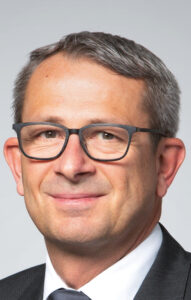 René Frauenknecht has been with Steiner AG for five years. In his role as Head Sale and Lease he is responsible for the sale and rental of all apartments and service areas developed by Steiner AG. Before that he was managing director of Intercity AG Zug / Luzern for over seven years. The federally certified real estate trustee studied business administration at the Kaderschule Zurich and completed the master’s course in Advanced Studies in Real Estate CUREM at the University of Zurich.
René Frauenknecht has been with Steiner AG for five years. In his role as Head Sale and Lease he is responsible for the sale and rental of all apartments and service areas developed by Steiner AG. Before that he was managing director of Intercity AG Zug / Luzern for over seven years. The federally certified real estate trustee studied business administration at the Kaderschule Zurich and completed the master’s course in Advanced Studies in Real Estate CUREM at the University of Zurich.
Marc Lyon

Marc Lyon has been Head Real Estate Development Switzerland at Implenia Schweiz AG since the beginning of the year, where he has been Head of Development German-speaking Switzerland for the last three years. Before that, he worked for two years at Swiss Prime Site AG in the development and construction division throughout Switzerland and previously for 6 years at Credit Suisse in the real estate investment management division, responsible for the development and implementation of major projects in Switzerland and abroad. At the same time, he headed the Sustainability & Innovation department in the Construction & Development department. Marc Lyon studied architecture at the EPFL in Lausanne and has a bachelor's degree in business administration. He has been a Member of the Royal Institution of Charted Surveyors (RICS) since 2015.
Tobias Achermann
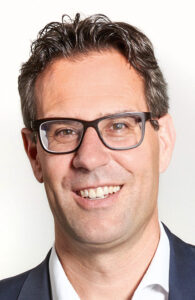 Tobias Achermann was CEO of Zug Estates Holding AG from 2014 to May 2020. With the model site development Suurstoffi in Rotkreuz, the trained real estate economist has established himself as an expert in sustainable and innovative site development. Zug Estates aims to become the first listed real estate company with a portfolio without CO2 emissions. Since June 1, 2020 he has been managing director of Achermann Consulting GmbH, which pursues the purpose of taking on board mandates and carrying out economic advice.
Tobias Achermann was CEO of Zug Estates Holding AG from 2014 to May 2020. With the model site development Suurstoffi in Rotkreuz, the trained real estate economist has established himself as an expert in sustainable and innovative site development. Zug Estates aims to become the first listed real estate company with a portfolio without CO2 emissions. Since June 1, 2020 he has been managing director of Achermann Consulting GmbH, which pursues the purpose of taking on board mandates and carrying out economic advice.
Claudia Siegle
 Claudia Siegle is a team leader in the development department at Mobimo Management AG. The graduate in business administration with a CAS in needs-based planning and construction as well as a master's degree in community, urban and regional development is responsible for various site developments. For example for the Mattenhof area in Lucerne South – a large development with 120 rental apartments, offices, restaurants and a Holiday Inn hotel, which opened in summer 2019.
Claudia Siegle is a team leader in the development department at Mobimo Management AG. The graduate in business administration with a CAS in needs-based planning and construction as well as a master's degree in community, urban and regional development is responsible for various site developments. For example for the Mattenhof area in Lucerne South – a large development with 120 rental apartments, offices, restaurants and a Holiday Inn hotel, which opened in summer 2019.
Valentin Müller
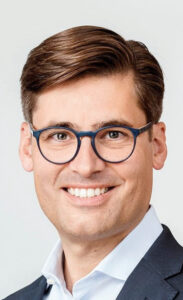
Valentin Müller has been CEO of UTO Real Estate Management AG for two years, which specializes in the development and management of third-party real estate portfolios. Current projects include the Tiny Houses on Zollikerberg and the Performative House in Zurich Unterstrass. Before his current position, the qualified architect was Head of Real Estate and a member of the group management of AMAG Automobil und Motoren AG.
Roland Thoma
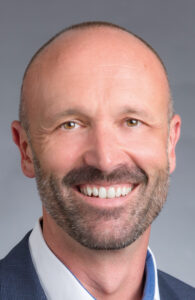 Roland Thoma has been managing director of the HIG Immobilien Anlage Foundation, which invests in Swiss real estate, for three years. Current projects include a replacement property in the listed old town of Bern and the flo & fleur settlement development in Liebefeld-Köniz, Canton of Bern with a total of 282 apartments. Before joining HIG, Roland Thoma was a member of the management team and was responsible for the transactions of H&B Real Estate AG. Roland Thoma graduated from the Swiss Hotel Management School in Lucerne and completed further training at CUREM and the St. Gallen University of Applied Sciences in the areas of real estate management and real estate development.
Roland Thoma has been managing director of the HIG Immobilien Anlage Foundation, which invests in Swiss real estate, for three years. Current projects include a replacement property in the listed old town of Bern and the flo & fleur settlement development in Liebefeld-Köniz, Canton of Bern with a total of 282 apartments. Before joining HIG, Roland Thoma was a member of the management team and was responsible for the transactions of H&B Real Estate AG. Roland Thoma graduated from the Swiss Hotel Management School in Lucerne and completed further training at CUREM and the St. Gallen University of Applied Sciences in the areas of real estate management and real estate development.
Dr. Werner Schaeppi

Dr. Werner Schaeppi works as a communications researcher and consultant at the communications agency Creafactory AG and at the market research institute mrc research & consulting ag in Zug. He is co-owner of both companies that are leaders in real estate, capital goods and financial services. In the context of his work for the real estate industry, he regularly gives lectures on topics such as architectural semantics, branding and marketing communication at various universities. Werner Schaeppi studied at the University of Zurich. He has a degree in linguistics and a doctorate in social psychology.